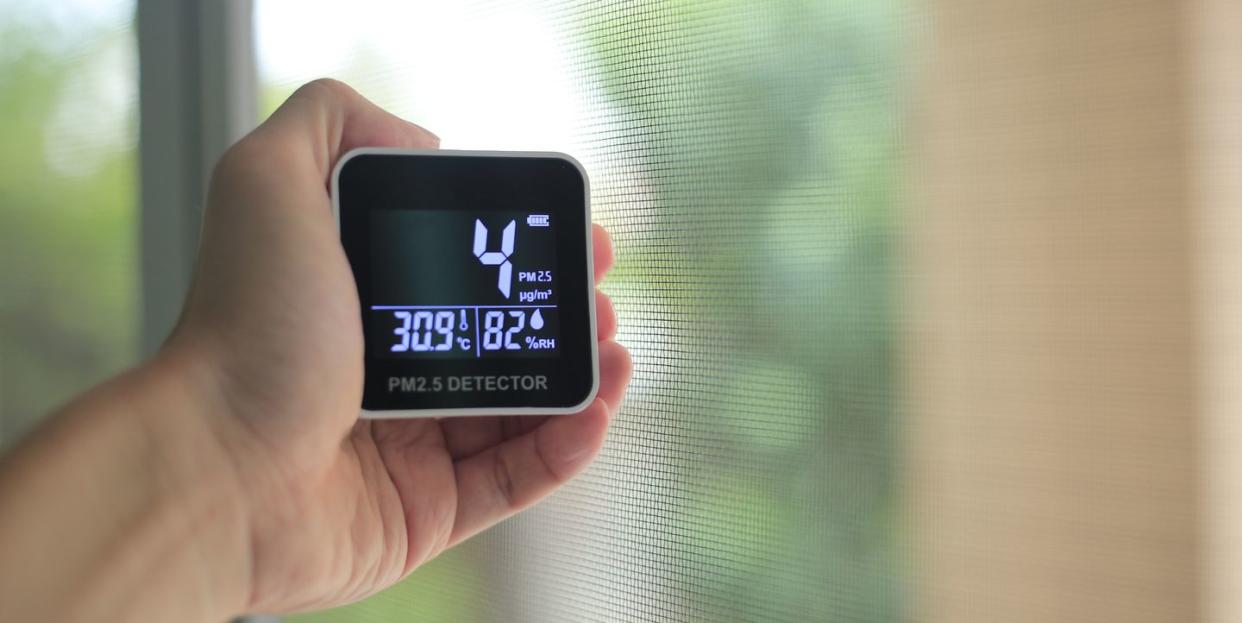A Personal CO2 Monitor Could Ease Your Public Covid Fears

Covid-19 is undeniably an airborne illness. The pandemic has changed how we experience public spaces. Social distancing and mask-wearing are still the norm as the majority of the country moves into getting vaccinated. That in mind, what does that mean for the air we breathe and could potentially catch Covid from?
Some wary individuals have taken to carrying personal CO2 monitors to determine their level of personal safety in an indoor space, using higher numbers as a means of higher chances of transmission.
Where there's no surefire way to avoid catching Covid, we asked an expert about CO2 monitors and whether they're good determinants of safety in the time of Covid.
What are CO2 monitors?
Carbon dioxide monitors or detectors monitor the amount of carbon dioxide in the air of a specific area. The gas itself is created by our lungs when we breathe. Measured in ppm, or parts per million, the carbon dioxide is read as an air contaminant, revealing how much is sticking around in one place, says Hannah Newman, MPH, the director of epidemiology at Lenox Hill Hospital in New York City. That helps determine air quality.
What does this mean for COVID?
"In relation to COVID, it's not there necessarily to say there's COVID aerosols floating here but it is indicating that there are higher levels of aerosols being spread in general," says Newman. More people in the room mean there's more exhaled carbon dioxide, and the monitor is picking that up.
What's a safe CO2 reading?
For indoor buildings, the CDC recommends a reading of no more than 800pm. "If the benchmark readings are above this level, reevaluate the ability to increase outdoor air delivery," the CDC said in a June 2021 statement. However, there is limited information on whether higher CO2 readings directly correlate to a risk of Covid-19 transmission.

Is a CO2 monitor worth investing in?
For the average person looking to ensure safety in their space, Newman doesn't see how having a CO2 monitor could hurt. Yet, she thinks it's a lot of personal responsibility to have, especially if you're a child at school. "It should be implemented at a system level rather than an individual responsibility," says Newman. A personal monitor is also fairly expensive, costing anywhere from $70 to $300.
When used on a personal or systemic level, CO2 monitoring can stop a problem before it arises, simply by opening a window for better filtration or even installing HEPA filters or performing HVAC maintenance for better airflow.
There are very few drawbacks to carrying one as well, according to Newman. "The only drawback would be not having a well-calibrated machine and it's giving false readings or if you have someone who doesn't know how to interpret it," she says. "It could cause undue panic or drama where there doesn't need to be." But in general, she considers them something safe that "isn't going to hurt anyone."
Taking it a step further, Newman thinks having public gradings of air quality on buildings could help others judge their comfort levels in the time of COVID. "If I had that information, I could definitely make more informed decisions on what I'd feel comfortable doing," she says.
You Might Also Like

